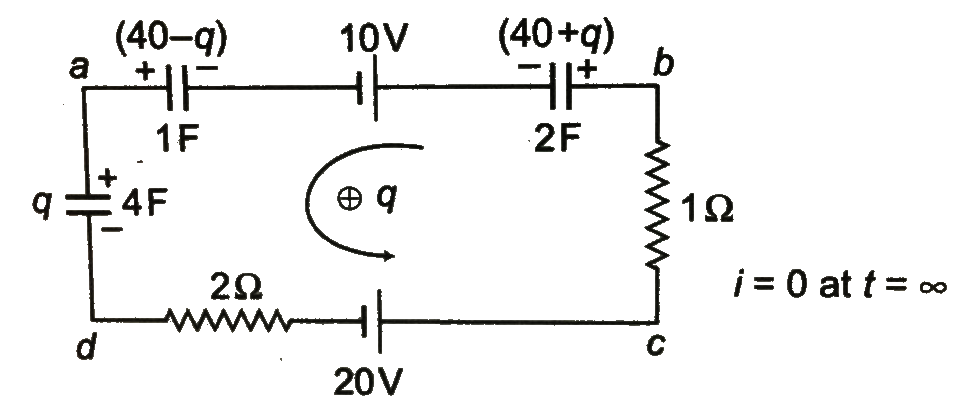An audio signal of 15 kHz frequency cannot be transmitted over long distance without modulation because.
the size of the required anteena would be at least 5 km which is not convenient.
the audio signal cannot be transmitted through sky waves.
the size of the required antenna would be at least 20 km, which is not convenient.
effective power transmitted would be very low, if the size of the antenna is less than 5 km
The correct Answer is:A, B, D
To understand why an audio signal of 15 kHz frequency cannot be transmitted over long distances without modulation, we can break down the problem step by step:
Step 1: Understanding the Frequency and Wavelength
The frequency of the audio signal is given as 15 kHz. To understand the transmission characteristics, we first need to calculate the wavelength (λ) of the signal. The relationship between the speed of light (c), frequency (f), and wavelength (λ) is given by the formula:
λ=cf
Where:
- c is the speed of light, approximately 3×108 m/s.
- f is the frequency, which is 15×103 Hz.
Step 2: Calculate the Wavelength
Substituting the values into the formula:
λ=3×108 m/s15×103 Hz=20,000 m=20 km
Step 3: Determine the Size of the Antenna
The size of the antenna required for effective transmission is typically a fraction of the wavelength. A common rule is that the antenna length should be about λ4:
Antenna Size=λ4=20 km4=5 km
Step 4: Analyze the Implications
1. Antenna Size: The required antenna size of 5 km is impractical for most applications.
2. Power Radiation: If the antenna is smaller than the required size, the effective power radiated will be very low, making long-distance transmission ineffective.
3. Transmission Method: Audio signals cannot be transmitted via sky waves, which limits the methods of transmission over long distances.
Conclusion
Thus, an audio signal of 15 kHz cannot be transmitted over long distances without modulation primarily because:
- The size of the required antenna would be at least 5 km, which is not convenient.
- The effective power transmitted would be very low if the size of the antenna is less than 5 km.
The frequency of the audio signal is given as 15 kHz. To understand the transmission characteristics, we first need to calculate the wavelength (λ) of the signal. The relationship between the speed of light (c), frequency (f), and wavelength (λ) is given by the formula:
- c is the speed of light, approximately 3×108 m/s.
- f is the frequency, which is 15×103 Hz.
Substituting the values into the formula:
The size of the antenna required for effective transmission is typically a fraction of the wavelength. A common rule is that the antenna length should be about λ4:
1. Antenna Size: The required antenna size of 5 km is impractical for most applications.
2. Power Radiation: If the antenna is smaller than the required size, the effective power radiated will be very low, making long-distance transmission ineffective.
3. Transmission Method: Audio signals cannot be transmitted via sky waves, which limits the methods of transmission over long distances.
Thus, an audio signal of 15 kHz cannot be transmitted over long distances without modulation primarily because:
- The size of the required antenna would be at least 5 km, which is not convenient.
- The effective power transmitted would be very low if the size of the antenna is less than 5 km.
Topper's Solved these Questions
- COMMUNICATION SYSTEMBOOK - DC PANDEY ENGLISHCHAPTER - COMMUNICATION SYSTEMEXERCISE - Subjective
11 Videos
- COMMUNICATION SYSTEMBOOK - DC PANDEY ENGLISHCHAPTER - COMMUNICATION SYSTEMEXERCISE - Single Correct
8 Videos
- CAPACITORSBOOK - DC PANDEY ENGLISHCHAPTER - CAPACITORSEXERCISE - OBJECTIVE_TYPE
1 Video
- CURRENT ELECTRICITYBOOK - DC PANDEY ENGLISHCHAPTER - CURRENT ELECTRICITYEXERCISE - Medical entrances gallery
97 Videos
Similar Questions
The LC product of a tuned amplifier circuit require to generate a carrier wave of 1 MHz for amplitude modulation is
View SolutionThree waves A,B and C of frequencies 1600 KHz, 5MHz and 60 MHz, respectively are to be trasnmitted from one place to another which of the following is the most appropriate mode of communication?
View SolutionIn the circuit shown as potential difference of 60V is appliled across AB. The potential difference between the points M and N is

View SolutionA potentiometer wire is 100cm long hand a constant potential difference is maintained across it. Two cells are connected in series first to support one another and then in opposite direction. The balance points are obatined at 50cm and 10cm from the positive end of the wire in the two cases. The ratio of emfs is:
View SolutionAn audio signal of 15 kHz frequency cannot be transmitted over long distance without modulation because.
View SolutionAssertion. Audio signal of frequencuy 10 KHz cannot be transmitted over long distance without modulation. Reason. Length of the antenna required lambda//4 . Should have practical value.
View SolutionSTATEMENT 1 : The audio frequency signals (20 Hz to 20 kHz) cannot be transmitted without distortion over long distances STATEMENT-2: Noise has its greatest effect when the signal is weak
View SolutionAn audio signal of 15 kHz frequency cannot be transmitted over long distances without modulation because
View SolutionAudio signal cannot be transmitted because
View Solutionश्रव्य संकेतो को लंबी दूरियों तक संचारित करने के लिए उच्च आवर्ती की वाहक तरंगो की आवश्यकता होती है क्योकि
View SolutionkHz आवृत्ति की एक श्रव्य सिग्नल बिना मॉडुलन के लम्बी दूरियों पर प्रेषित नहीं हो सकता है क्योंकि
View SolutionAn audio signal of 15 kHz frequency cannot be transmitted over long distance without modulation because.
View Solution(A): Low frequency audio signals can not be transmitted directly over long distances
(B) : To transmit low frequency audio signals over long distances, the audio signals are super imposed on a high frequency carrier signal
View SolutionA sound signal of 15 kHz frequency cannot be transmitted over long distances without being modulated, because
View SolutionAn audio signal of 15 kHz frequency cannot be transmitted over long distance without modulation because.
View Solution

